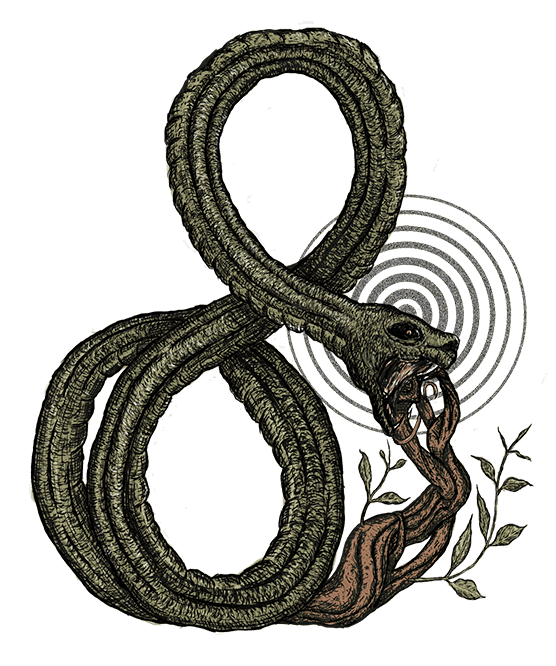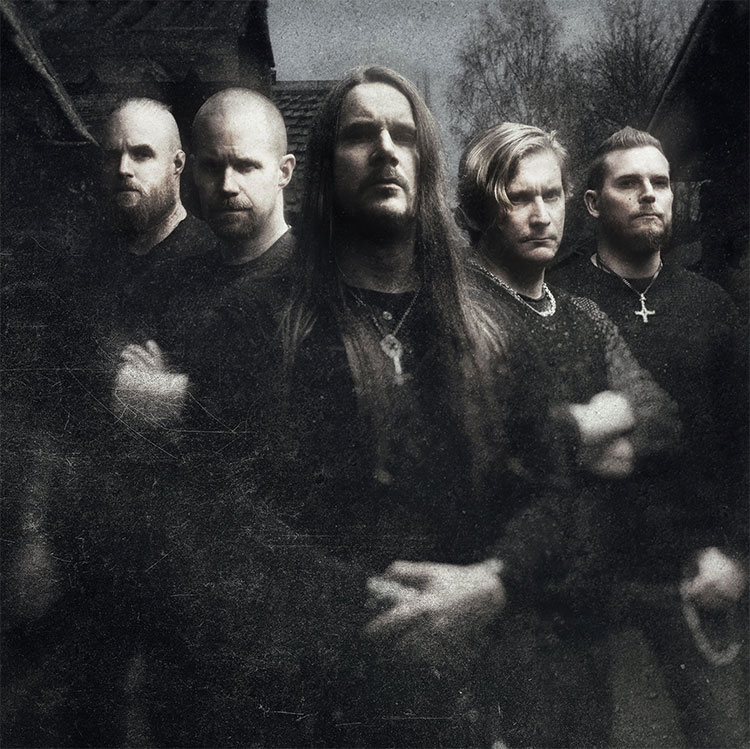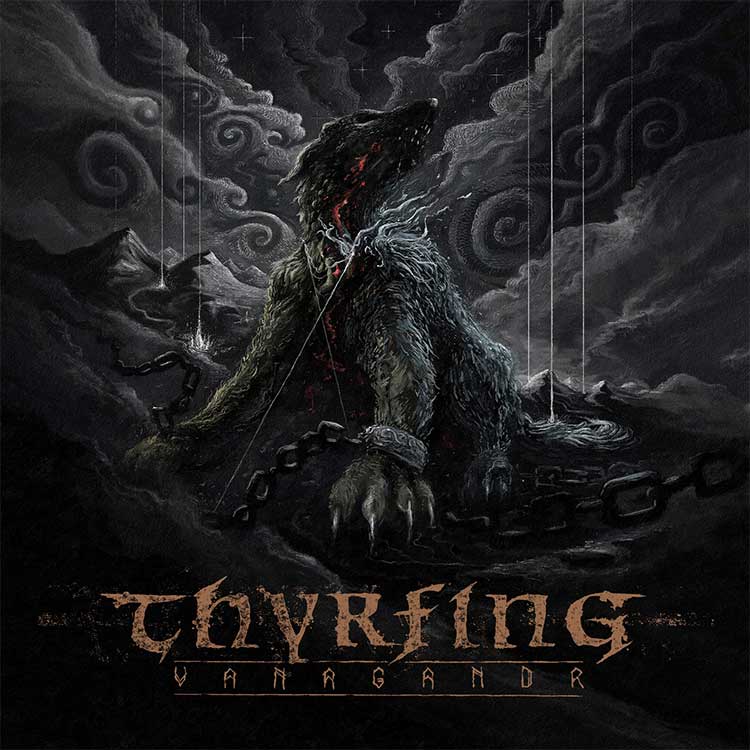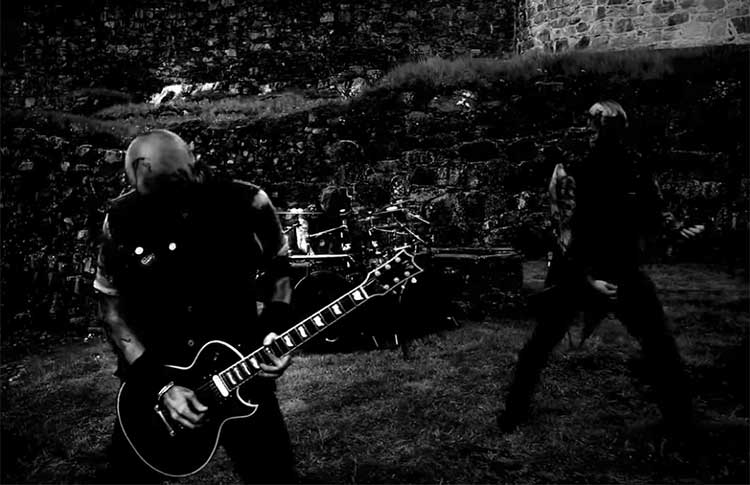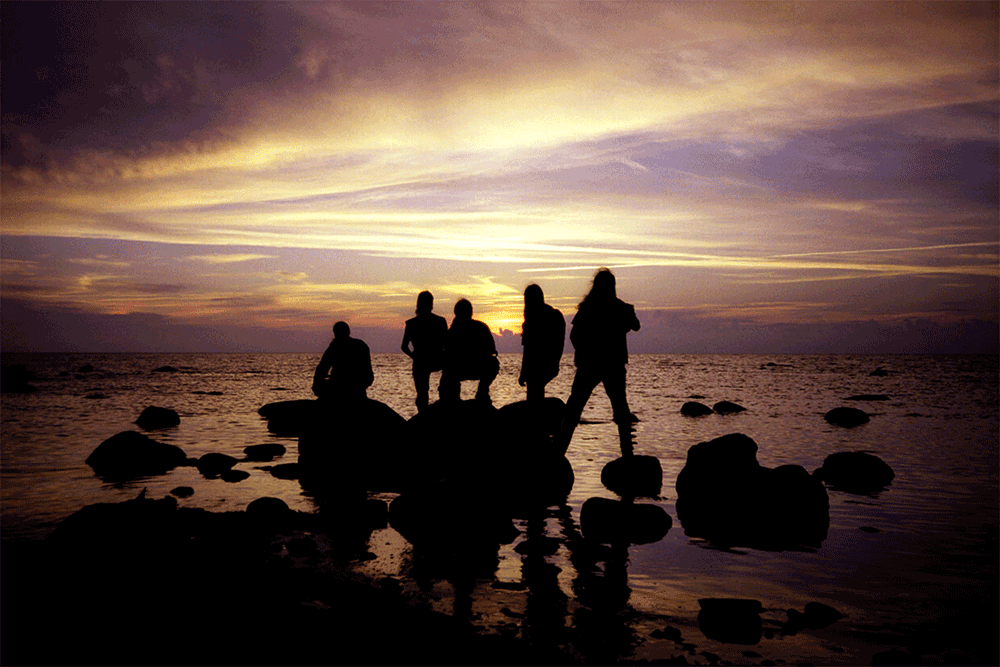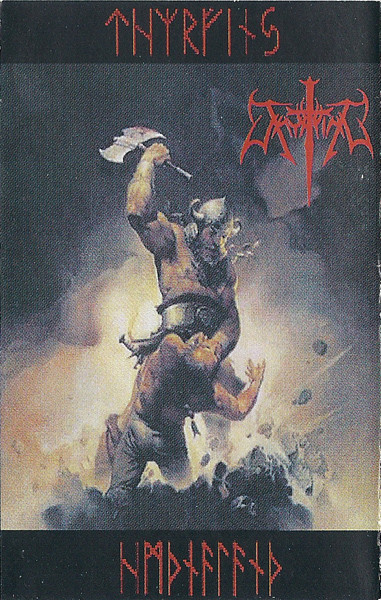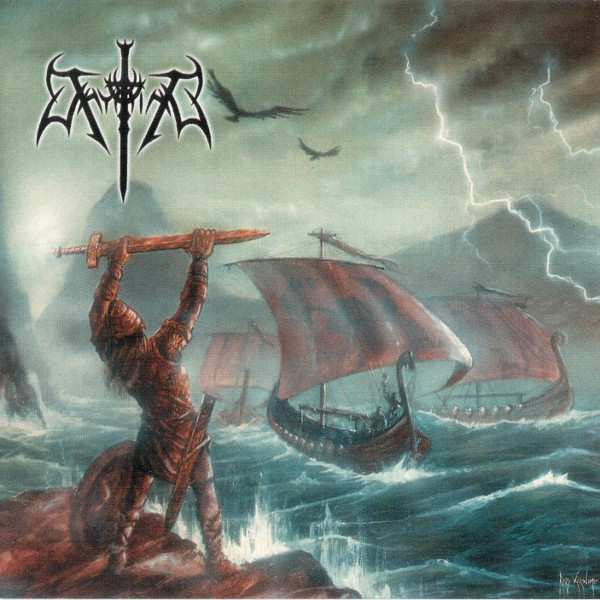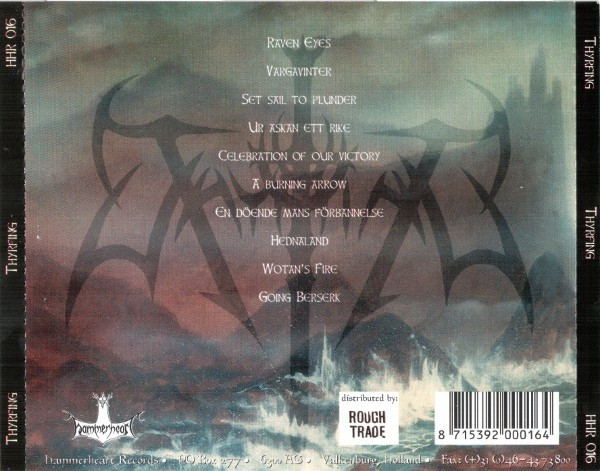Thyrfing I
2024-02-27
by Niklas Göransson
As Thyrfing approach three decades of groundbreaking Viking metal, co-founder and guitarist Patrik Lindgren reflects on their ascent from the depths of the Swedish underground to international acclaim.
PATRIK LINDGREN: “Vanagandr” is a true representation of THYRFING’s past, present, and future – it’s the culmination of almost three decades’ worth of experience, trial and error, and personal growth. I’d go so far as to say that this is something we’ve attempted to create before but weren’t able to do until now. The album is based on a long-held concept that, although vague, we’ve worked hard to follow.
“Vanagandr”, THYRFING’s eighth full-length album – the first in eight years – was released by Despotz Records in August 2021. Its predecessor, “De ödeslösa”, was tracked almost entirely on their own equipment; this time, guitars and drums were recorded with Jakob Herrmann at Gothenburg’s Top Floor Studios.
PATRIK: We thought it might be beneficial in terms of focus to work outside of our home environments. Jakob is renowned as one of Sweden’s best drum producers, and his equipment and facilities are top-notch. He and Dennis (drums) have been in touch for some time, but it wasn’t until now that we finally had the opportunity to work together.
Besides engineering, Herrmann also acted as producer. This is only the second time that THYRFING has worked this way – the first being the 2002 album “Vansinnesvisor”.
PATRIK: Involving an outside party in our creative process – not to mention having to make important decisions ‘on the fly’ – makes me feel uncomfortable and stressed. It’s just something that doesn’t gel with my persona. However, I’ve come to accept that it’s for the greater good. Like “Vansinnesvisor”, “Vanagandr” stands out in a positive way; it sounds focused and fierce. It’s almost as if someone brought out the best in us. Perhaps that was exactly what we needed?
Why did it take eight years?
PATRIK: Well, it wasn’t a matter of constantly tinkering with the music or lyrics to perfect them – but rather long stretches of time without inspiration or ideas. Eventually, we reached a point where we had the resources, time, and patience to hone every detail without rushing into something half-assed. Actually, the lyrics of the song “Undergångens länkar” tell my perspective on the creation of this album.
THYRFING’s Swedish lyrics have always been one of the band’s main strengths – especially once they moved away from Vikings but kept the Norse nomenclature. And this is a tradition very much upheld on “Vanagandr”, with “Undergångens länkar” as a prime example.
PATRIK: I wanted to delve into my personal creative functions and habits – both as an artist and an individual. However, it felt essential that my sentiments were expressed in a manner which aligns with THYRFING’s general context and spirit. What I tried to avoid was for the lyrics to come across as some kind of self-indulgent lamentation about my first-world problems. Instead, I wanted them to be strong and direct. Balancing these elements can be challenging, but I think we achieved it successfully.
Another lyric of Patrik’s that caught my eye was “Järnhand” – which translates to ‘Iron Hand’. Eloquently phrased but difficult to analyse.
PATRIK: The inspiration for “Järnhand” was the concept of power – how it’s defined and how we cling to it in different ways. Admittedly, writing about authoritarian control is nothing new. Still, I couldn’t shake the image of someone trapped inside a self-built castle, physically embodying the perception of power whilst simultaneously losing his mind. Digging deeper, I realised that it’s applicable to so much else in life. I was initially concerned that it might come across as a bit clichéd, but I’m happy with how it turned out, especially the accompanying music video.
The foundations of THYRFING were cemented back in 1992 when two thirteen-year-old metalheads started jamming together – Joakim Kristensson on guitars and Thomas Väänänen on drums. This is what eventually grew into the black metal band PANTHEON, which Patrik joined on bass in 1994.
At some point during the spring of ‘95, Patrik and Joakim stuck around after PANTHEON had finished rehearsing. The latter took Thomas’ place behind the kit, whereas Patrik switched from bass to guitar.
PATRIK: PANTHEON was a quite typical mid-90s band: a mix of black and death metal incorporating melodies, keyboard layers, and blast beats – very much in the vein of these big-sounding albums with ‘extra everything’ common for that era. THYRFING turned into something more basic: mid-tempo, with these almost ‘stomping’ rhythms. What really set us apart was the use of keyboards, which played a leading role in our songwriting.
Two weeks after the first improvised rehearsal, Peter Löf joined as keyboardist and Kimmy Sjölund was brought in on bass.
PATRIK: Sure, many bands in the demo scene used synths – but mostly to fill out their sound, as overdubs for the guitars. With the addition of a dedicated keyboardist in Peter, we made them a crucial part of our songs. Things went pretty fast from there as we started rehearsing and writing material with this new constellation. By the end of the year, we had recorded a demo tape, created sleeve inlays, and printed a pile of flyers; we were ready to conquer the world.
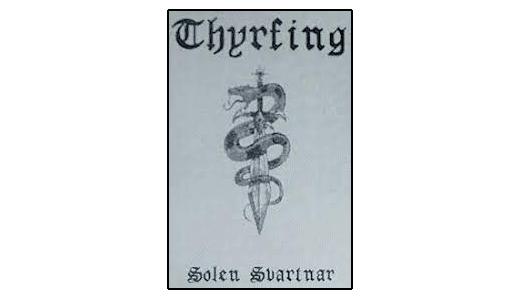
In December 1995, THYRFING recorded their first demo tape, “Solen svartnar”. Listening to it, one gets the impression that STORM, ISENGARD, and KATATONIA’s demo and debut album had found their way into the young men’s lives.
PATRIK: Yes, those bands had an enormous impact on us. Now, we certainly didn’t set out to copy them or replicate anyone’s sound, but it was inspiring to see what they achieved using modest means and without instrumentational acrobatics, expensive studios, or fancy producers. We felt that we could do something similar.
How long had you been playing guitar at that point?
PATRIK: About six months, I think? Perhaps we should’ve spent more time honing our skills before recording anything, but we were consumed by youthful enthusiasm and creativity. We weren’t too concerned about the technicalities; for us, it made perfect sense to capture our ideas and share them with the world. Looking back, I can sometimes miss that mentality. Nowadays, there’s a lot more emphasis on planning, producing, and evaluating – whereas back then, we just went for it without hesitation.
This demo was my introduction to the project, as I bought the tape from Thomas Väänänen – the PANTHEON drummer, who took over as vocalist for THYRFING after “Solen svartnar” – at a campsite on the Swedish island of Gotland in the summer of 1996. I believe this was the same evening they took the band photo that ended up on the “Hednaland” demo shortly thereafter.
PATRIK: Our distribution and contact networks were limited to the tape-trading movement, flyers, and local xeroxed fanzines. We barely had any contacts abroad, and I vividly remember how big of a deal it was even to be noticed outside of Stockholm – like in Dusk Mag, the mid-90s fanzine of our future vocalist Jens Rydén (NAGLFAR). This might sound bizarre and even laughable today, but the world was very small for us back then.
Come October 1996, THYRFING had recorded their second demo, “Hednaland”. While “Solen svartnar” was rather cold-sounding and primitive, “Hednaland” introduced the folk and medieval elements that characterised THYRFING’s early sound.
PATRIK: Peter in particular had made great strides with his instrument, creating truly unique sounds that set us apart from most other metal bands. His keyboard work was undoubtedly the musical anchor we relied on. However, all of us shared the same enthusiasm and drive to push THYRFING forward. We maintained an attitude of ‘no regrets’, and our main goal was to continue writing and releasing songs.
THYRFING’s first-ever gig took place in February 1997 alongside A MIND CONFUSED – which later grew into KAAMOS – and CONCEALED.
PATRIK: Back then, there was no such thing as promoters or agencies for bands at our level. If there was a gig, it was most likely organised by one of the bands playing. We performed at youth centres and government-funded stages – not venues or clubs as we know them today – so you couldn’t expect a bar or anything like that. It’s pretty strange to think about it now: you could see DISSECTION or AMON AMARTH for just three euros but not have a drink while watching the show.
How much interaction with the local scene did you have at the time?
PATRIK: We knew some bands around Stockholm – such as those we played with. At that age and climate of the scene, it made perfect sense to strike up a conversation with almost anyone if they played in a band, had a fanzine, or simply listened to the music and bought demos.
Around the same time, Patrik and Thomas started an underground publication called Mysticism Magazine. The first issue was released in 1997 and contained bands such as EDGE OF SANITY, FUNERAL MIST, SUMMONING, and VARATHRON.
PATRIK: Most of our early interviews were hand-written on paper. I recall being surprised at how easy it was to access bands and get them to answer our… let’s call them ‘interview questions’. That’s when we began establishing more contacts outside of Sweden, both for Mysticism and for THYRFING. And often, these two went hand in hand. Just like demo tapes, fanzines were traded around and served as introductions to new contacts.
“Hednaland” caught the attention of an up-and-coming Dutch label called Hammerheart. Consequently, in July 1997 – only nine months after “Hednaland” – THYRFING entered Sunlight Studios in Stockholm to record with Tomas Skogsberg. That was an odd choice for their type of music, but I suppose there weren’t all that many to choose from.
PATRIK: There might have been studios better suited to our needs, but we were quite insulated back then. Despite the biggest hype fading, Sunlight was still the most renowned extreme metal studio in Stockholm. Travelling to another city was unthinkable; all of us were still in school and lived with our parents. We figured that since so many amazing bands had recorded at Sunlight, it should do for us as well.
This would’ve been on analogue equipment, correct?
PATRIK: Yes indeed – “Thyrfing” was recorded on reel-to-reel tape without click tracks. Scratch guitar, bass, and keyboards were tracked in real-time while Jocke played drums in an adjacent room. And yes, it was the well-known ‘Skogsberg way’ with guitar pedals patched into the mixing console for delays and other effects.
How did you get along with Tomas Skogsberg?
PATRIK: There were no major disagreements between us. The only issue that comes to mind is the drum sound; we kept asking him to add more reverb and volume to the toms. I remember Tomas grumbling something like, ‘Damn BATHORY – Quorthon started all this with the “Hammerheart” toms because he didn’t know any better, and now everyone wants it.’
BATHORY’s 1990 album marked a shift from the earlier black metal style to what would later be recognised as Viking metal. The toms played a crucial role in creating the epic and grandiose atmosphere of “Hammerheart”. However, the key to achieving this pounding sound was the complete absence of blast beats. Had it been played faster than mid-tempo, it would’ve turned into one big, echoing cacophony.
“Thyrfing” was released in March 1998. To promote their debut album, the band played three shows in 1998, all in the Stockholm area.
PATRIK: If I recall correctly, considering the circumstances and our lack of live experience, everything went well. Honestly, I wasn’t particularly keen on performing live back then; it was other members who pushed for it. My focus was solely on preparing for the next album. The gigs were just a small ‘side activity’ that we thought we should try since most bands were doing it. Of course, my mindset changed completely over time.
This was at a time when the likes of DIMMU BORGIR and CRADLE OF FILTH were enjoying their commercial breakthroughs. As a counter-reaction, keyboards were not exactly the most cred-boosting of musical components for a black metal band.
PATRIK: Indeed. I don’t recall anyone ever saying it to our faces – but sure, we could sense that some people frowned upon THYRFING. Our use of keyboards and emphasis on melodies and atmosphere didn’t always sit well with everyone. However, this was never a big concern. All of us considered ourselves part of the underground death and black metal scene, but we never tried to blend in with the more traditional, puritan elements. We always felt that THYRFING had its own identity.
In a 1998 interview with an outlet named Panzer Division, Patrik mentioned that they had been in talks about a European tour later that year.
PATRIK: I think the discussed tour package was MENHIR, NECROMICON, HADES ALMIGHTY… and MAYHEM, actually. However, those were just loose plans. Looking back, it’s amusing that we’d reveal such information in an interview before anything had been set in stone. It’s a sign of the times, I suppose – imagine the chaos with offended and misinformed people it would’ve resulted in today.
log in to keep reading
The second half of this article is reserved for subscribers of the Bardo Methodology online archive. To keep reading, sign up or log in below.
